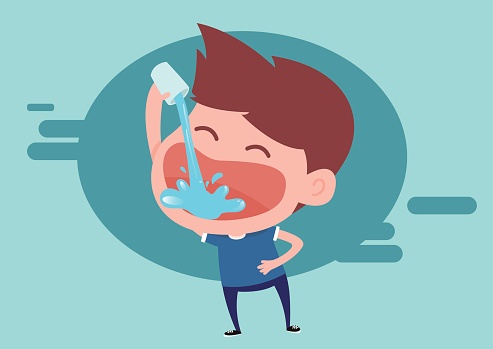We know the BOD POD and Fit3D are great assessments for this, but metabolic testing can take it one step further. Metabolic testing can really be a game changer for many. Two tests that stand out: one that tests your VO2 Max (the efficiency of your heart and lungs to use oxygen as you exercise), and the other being the Resting Metabolic Rate Test (RMR—how many calories your body burns in a day at complete rest and prior to exercise).
VO2 Max Testing
 VO2 Max testing is a test to quantify the efficiency of your heart and lungs during exercise. Why is this important? An athlete who wants not only to improve times, but also to see if their training is effective, can find training zones (based on their testing) and progress based on specific training over time.
VO2 Max testing is a test to quantify the efficiency of your heart and lungs during exercise. Why is this important? An athlete who wants not only to improve times, but also to see if their training is effective, can find training zones (based on their testing) and progress based on specific training over time.
The test is usually done on a treadmill or bike and takes roughly 20 to 30 minutes. It isn’t for the faint of heart. To get optimal results, we need for you to be able to “max out” your abilities and do so without any other limiting factors (previous injuries, medications, and so on). For people who are unable to do a VO2 Max test, we highly recommend the alternative Sub Max VO2 test, which can accommodate a wider range of people looking for similar results.
RMR Testing
 For individuals who want to know how many calories they burn in a day (their metabolism), the RMR test is your main tool to finally take off the blindfold and know exactly how to budget your calories to match your goals, whether it is weight loss or weight gain.
For individuals who want to know how many calories they burn in a day (their metabolism), the RMR test is your main tool to finally take off the blindfold and know exactly how to budget your calories to match your goals, whether it is weight loss or weight gain.
Most likely, if I were to ask someone on the street how many calories they burned today, they would not be able to give an accurate answer. If this were the case, how would you know how many calories to eat to see the results you desire? Activity trackers do a decent job, but they still use plenty of estimations, which leaves even more guesswork. A doctor’s advice can be useful, but they still are limited in what they know about your body. The RMR test, again, takes away the guesswork and gives you a real number to base your nutrition from. Unlike the VO2 Max test, anyone can benefit from the RMR testing.
***
To recap, you are serious about your health but want more information that can make you better, right? You want to get the most out of your time in the gym, correct? You want to feel good and look even better? We have the information you need with the VO2 Max test and RMR test. You may ask, “Are these tests right for me?” The answer can be found by simply talking to one of the Health Fitness Specialists in the NIFS Fitness Center, NIFS’s Registered Dietician, to discuss what is right for you. VO2 Max testing and RMR testing are by appointment only; we hope to see you soon.
Muscleheads rejoice and evolve!
This blog was written by Thomas Livengood, Health Fitness Specialist. To read more about the NIFS bloggers, click here.
NIFS VO₂ Max Test and RMR are products by KORR™. Images provided by Korr™.


 This is a great time of year to get out and do some fitness activities that you do not get to do year round, living in an Indiana climate. As the weather turns, the opportunity for some watersports becomes more realistic. While there are many different things you can do for exercise on the water like kayaking, canoeing, and swimming, my all-time favorite outdoor activity is paddleboarding. The benefits of
This is a great time of year to get out and do some fitness activities that you do not get to do year round, living in an Indiana climate. As the weather turns, the opportunity for some watersports becomes more realistic. While there are many different things you can do for exercise on the water like kayaking, canoeing, and swimming, my all-time favorite outdoor activity is paddleboarding. The benefits of  Fluid (mainly
Fluid (mainly  Have you ever considered that punching and kicking is a form of exercise and fitness? Look no farther than the physique of boxers and fighters. And from time to time, we all need to do a little punching and kicking. In fact, not only is it a form of exercise, but you can burn a ton of calories doing it! If you like this type of stuff and are into different forms of mixed martial arts, you should really consider giving
Have you ever considered that punching and kicking is a form of exercise and fitness? Look no farther than the physique of boxers and fighters. And from time to time, we all need to do a little punching and kicking. In fact, not only is it a form of exercise, but you can burn a ton of calories doing it! If you like this type of stuff and are into different forms of mixed martial arts, you should really consider giving  One of my greatest passions is health and fitness. It has always been a part of my life, from studying it in school to choosing it as my career path. This year I have decided to try something that I have not done before: a triathlon! I’m excited to share with you my career as a personal trainer and health fitness instructor and my journey in training for the Indianapolis
One of my greatest passions is health and fitness. It has always been a part of my life, from studying it in school to choosing it as my career path. This year I have decided to try something that I have not done before: a triathlon! I’m excited to share with you my career as a personal trainer and health fitness instructor and my journey in training for the Indianapolis 
 Can you remember preschool when the teacher would turn down the lights and break out the cots? Nap time! You might not have had that exact experience, but as humans we are prone to napping. In our go-go-go life, time is money. To society, sleeping during the day is seen as a luxury that we cannot provide ourselves, and is usually thought of as a sign of laziness.
Can you remember preschool when the teacher would turn down the lights and break out the cots? Nap time! You might not have had that exact experience, but as humans we are prone to napping. In our go-go-go life, time is money. To society, sleeping during the day is seen as a luxury that we cannot provide ourselves, and is usually thought of as a sign of laziness.